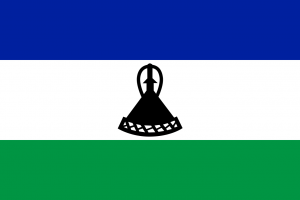Difference between revisions of "Language/Southern-sotho/Culture/Traditional-Clothing"
m (Quick edit) |
m (Quick edit) |
||
| Line 74: | Line 74: | ||
<span gpt></span> <span model=gpt-3.5-turbo></span> <span temperature=1></span> | <span gpt></span> <span model=gpt-3.5-turbo></span> <span temperature=1></span> | ||
==Other Lessons== | |||
* [[Language/Southern-sotho/Culture/Family-Structure|Family Structure]] | |||
* [[Language/Southern-sotho/Culture/Lesotho-Timeline|Lesotho Timeline]] | |||
* [[Language/Southern-sotho/Culture/Traditional-Music-and-Dance|Traditional Music and Dance]] | |||
* [[Language/Southern-sotho/Culture/Marriage-and-Ceremonies|Marriage and Ceremonies]] | |||
{{Southern-sotho-Page-Bottom}} | {{Southern-sotho-Page-Bottom}} | ||
Revision as of 21:22, 2 April 2023
Overview
In Southern Sotho culture, traditional clothing plays an important role in defining identity, reflecting cultural values, and expressing individual and collective pride. Traditional clothing is worn on special occasions such as weddings, funerals, and cultural festivals. Each garment is typically handmade and incorporates unique patterns and colors that are symbolic of Southern Sotho culture.
In this lesson, you will learn about traditional Southern Sotho clothing, including its significance, occasions for wearing it, and its cultural meaning.
Southern Sotho Traditional Clothing
Southern Sotho traditional clothing is characterized by vibrant colors, intricate embroidery, and unique patterns. Each garment is typically handmade and sewn together by a skilled tailor or seamstress. The following are some of the most notable pieces of Southern Sotho traditional clothing:
Mokorotlo
The Mokorotlo is a traditional hat that is often regarded as a symbol of Basotho identity. It is typically made from woven grass or reeds and features a distinctive conical shape. The hat is often worn with a traditional blanket, especially during the colder months.
Kobo
The Kobo is a type of apron that is traditionally worn by Southern Sotho women. It is made from a variety of materials, including leather, cowhide, and goat skin, and is typically decorated with intricate embroidery.
Seshoeshoe
The Seshoeshoe is a type of fabric that is commonly used for making traditional clothing. It is characterized by its unique circular or diamond-shaped patterns, which are typically printed using indigo or other natural dyes.
Mokgolobotho
The Mokgolobotho is a type of shawl that is often worn by Southern Sotho women during traditional ceremonies. It is typically made from a thin, lightweight fabric and features vibrant colors and intricate patterns.
Moriana
The Moriana is a type of ankle-length dress that is typically worn by Southern Sotho women. It features a fitted bodice and a full, tiered skirt, and is often made from a lightweight, flowing fabric such as chiffon or georgette.
Tlhapi
The Tlhapi is a type of apron that is traditionally worn by Southern Sotho men. It is typically made from leather or cowhide and is decorated with intricate embroidery and beadwork.
Significance of Southern Sotho Traditional Clothing
Traditional clothing plays a significant role in African culture, including Southern Sotho culture. It serves as a means of expressing individual and collective identity, reflecting cultural values, and preserving cultural heritage. Each garment is often imbued with symbolic meaning that is passed down from one generation to the next.
Traditional clothing is typically reserved for special occasions such as weddings, funerals, and cultural festivals. It is often worn as a means of expressing pride in Southern Sotho culture and connecting with one's cultural roots. In addition, traditional clothing often serves as a means of distinguishing oneself from others and fostering a sense of community.
Conclusion
The Southern Sotho traditional clothing is a significant aspect of Southern Sotho culture, embodying the rich tradition and heritage of the Basotho people. Each garment is handmade and imbued with symbolic meaning, serving as a means of expressing individual and collective identity, preserving cultural heritage, and connecting with one's cultural roots.
By understanding the significance of Southern Sotho traditional clothing, we can gain a deeper appreciation for the cultural values and traditions of the Basotho people.
- Southern Sotho traditional clothing serves as a means of expressing identity, reflecting cultural values, and preserving cultural heritage.
- Each garment is unique and handmade, with symbolic meaning that is passed down from one generation to the next.
- Traditional clothing is typically worn on special occasions such as weddings, funerals, and cultural festivals, and serves as a means of expressing pride in Southern Sotho culture.
References
Other Lessons
